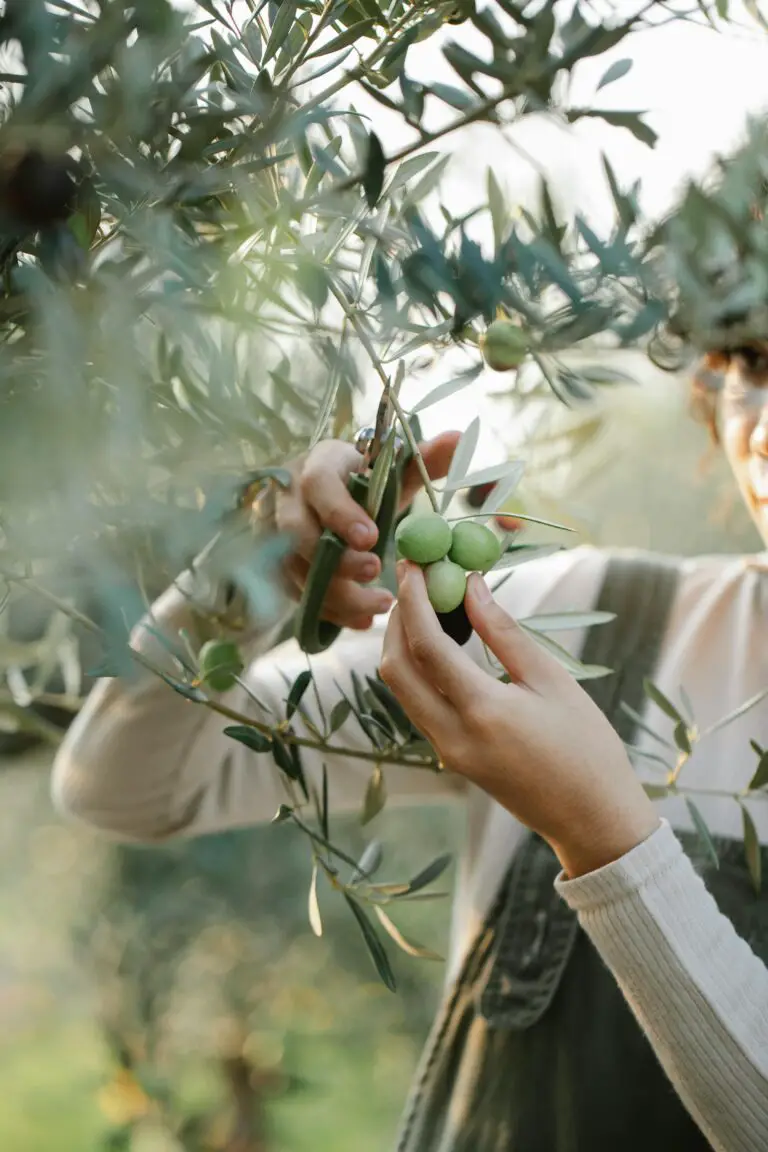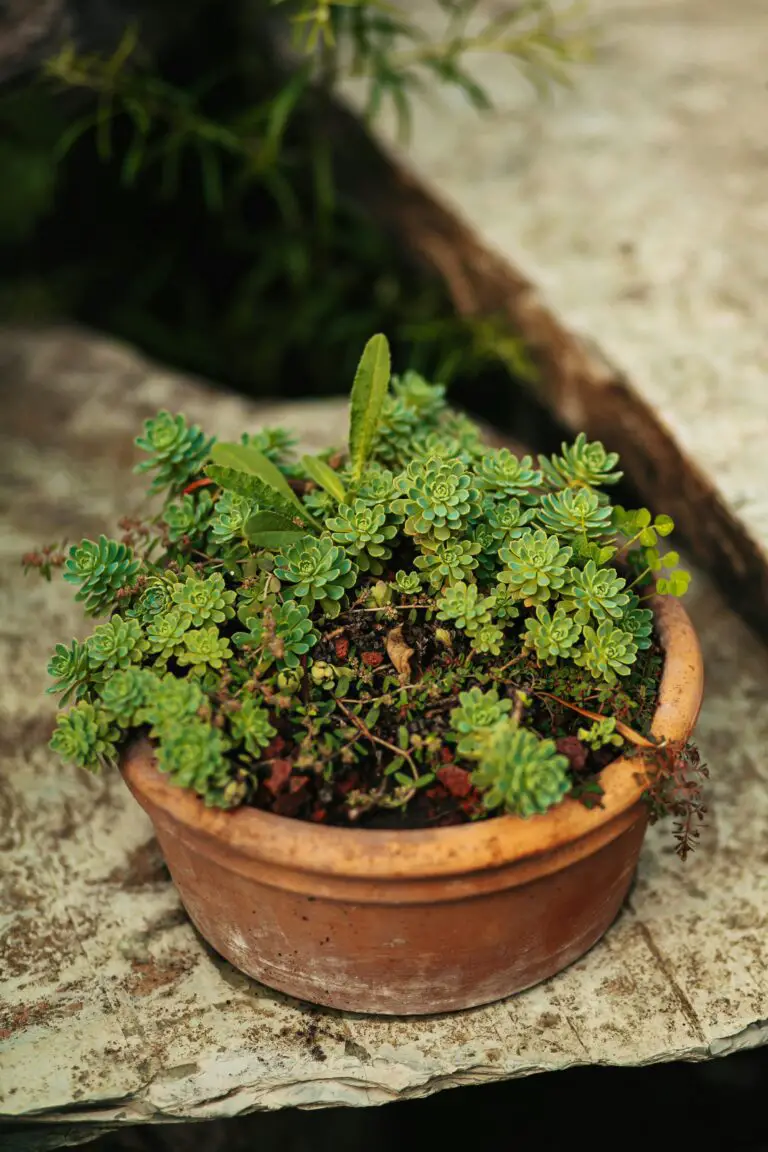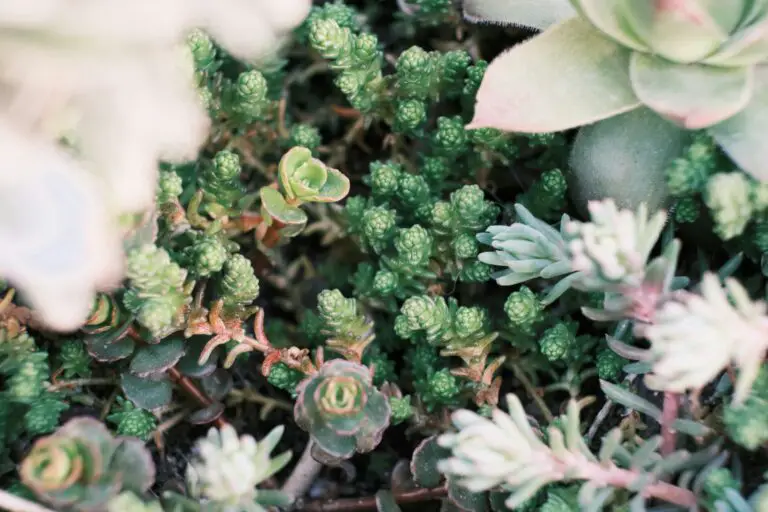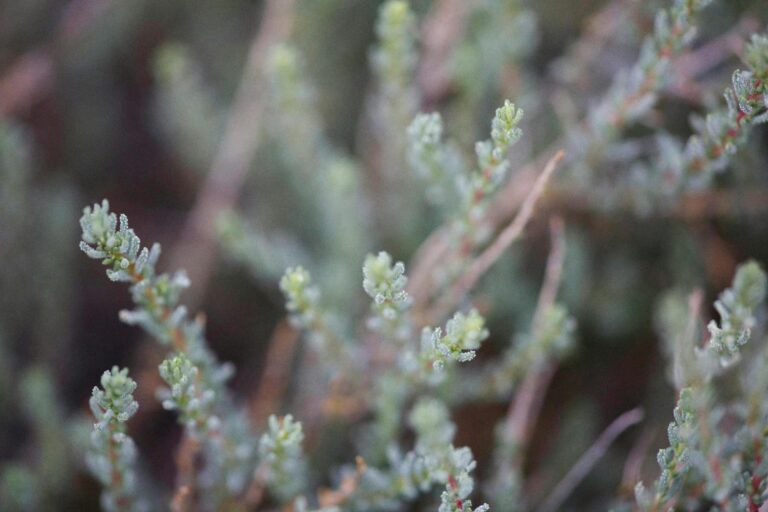Introduction to Sedum Trimming
Welcome to the world of Sedum, or as it’s fondly known, stonecrop. This hardy, ground-hugging perennial is a favorite among gardeners for its easy-care nature and stunning foliage. But, don’t let its robust demeanor fool you; sedum plants have a secret need for timely trims. Timely trimming isn’t just about keeping these succulent beauties in check; it’s about harnessing their full potential and accentuating their natural charm.
Imagine this: a garden brimming with sedum, each echoing the vivid colors of a painter’s palette, leaves plump with health, and flowers blooming with unbridled enthusiasm. This isn’t a serendipitous accident. It’s the result of strategic snips and calculated cuts. Pruning is more than a chore—it’s an art form that, when done at the right time, invigorates your sedum, spurring them towards their fullest expression.
When should sedum be cut back, you ask? Picture the transition from winter’s slumber to spring’s awakening—the perfect moment for your sedum to benefit most from your careful attention. Early spring, just as new growth begins to peek through the soil, is your cue to play the role of the meticulous gardener. Equipped with shears in hand, you can transform your sedum from winter worn to spring spectacular.
Not sure where to start with your sedum care journey? Check out our comprehensive guide to sedum planting for seasoned advice and timings to create a lush, succulent garden.
Pruning is more than just a seasonal task; it’s a pivotal part of the life cycle of your sedum that rewards not only the plant but also the gardener with a lush display of resilience and renewal. So, let’s roll up our sleeves, because it’s time to trim your sedums into tip-top condition!

Understanding Sedum Growth Habits
Picture the versatile sedum as the chameleon of the plant world – a botanical artist changing its palette with the passing seasons. Sedum plants, with their unique growth patterns and robust lifecycles, make knowing when to wield your pruning shears an art form in itself. But fear not, the secret to perfect sedum care lies in grasping these very patterns. So, let’s dive into the life of sedum and figure out how to keep your garden’s tapestry vibrant and flourishing!

In spring, sedum plants start their performance, stretching out of the soil with the promise of new growth. As stonecrops emerge, they’re not shy about their needs: basking in full sunlight, they unfurl their fleshy leaves and prep for an exquisite summer bloom. The array of sedum varieties is like a mosaic; from ground-huggers to lofty clusters of starry flowers – each playing their role with finesse. Whether you’ve got the brooding dark foliage of ‘Purple Emperor’ or the sunny spark of ‘Angelina’s Teacup’, each sedum beckons a tailored trim to maintain its glory.
Take, for instance, the ‘Autumn Joy’ variety. As the name heralds, it explodes in a late summer to fall floral fiesta, urging one to consider the phrase, “timing is everything” when planning a prune. As summer wanes, sedum invites pollinators to its blooms like guests to a grand soiree, and as the party ends, you’re faced with a decision. Do you snip away the spent flower heads to neaten the appearance, or let them stand, imparting winter interest and snacks for wildlife?
Each cutback decision has a purpose, serving to either rejuvenate growth, enhance flowering, or manage size. Prudent pruning, akin to a sculptor’s deliberate chisel, encourages sedum to put on their best show year after year. Armed with this understanding, you’ll turn your garden into an exhibition space for these resilient performers.
To help you further, here’s a guide that unravels the best time and techniques for cutting back perennials, ensuring your sedums and their perennial peers are given the best chance to strut their stuff.
As the diverse sedum parade marches through the seasons, it’s important to keep in step with their individual cycles. It’s not just about deadheading or size control; it’s about allowing these succulent wonders to live out their lifecycle with finesse, leaving the gardener as the quiet enabler of their innate splendor.
Determining the Best Time to Cut Back Sedum
Have you ever stood in your garden, pruners in hand, wondering if it’s the right moment to snip away at your sedum plants? It’s a common scene for garden enthusiasts because timing is everything when it comes to these hardy perennials. Sedum, or “stonecrop,” as they’re affectionately known, isn’t just another plant in your garden. They’re like the tough, resilient friend everybody loves – they don’t ask for much, but treat them right, and they’ll proliferate.
Picture this: It’s early spring, the birds are chirping, the air is crisp, and there’s a palpable excitement as new life sprouts around you. This is the moment your sedums are gearing up for growth. Early spring, just as the first signs of new growth appear, is an ideal time for cutting back the old, woody sedum stems from the previous year. The fresh sprouts are the future, and removing the old growth gives them the space to thrive.
But wait, what about the species of sedum that keeps their shape and adds winter interest with their frosted seed heads? Well, that’s where the plot thickens. Some gardeners prefer to leave these be until late winter or very early spring to maintain that intriguing texture in their winter gardens. Cutting them back too early deprives your garden of character during the drab months. Moreover, those seed heads can provide sustenance to local wildlife when food is scarce.
Sedums are also known for their drought tolerance, thanks to their succulent leaves. But did you know that summer can also be a time for a light trim? If you notice your sedum looking a bit leggy or floppy, a midsummer cut can encourage bushier growth and help maintain a more compact form. It’s like giving them a quick pep talk, saying, “You got this, grow stronger!”

However, here’s a tip from those who’ve learned the hard way: Don’t prune your sedum too late in the season. If you cut them back in late fall, you risk new tender growth that won’t survive the frost. No one wants to be that person who sends their plant friends into winter with a fresh haircut, only for them to catch a cold. Be mindful, time your cuts, and your sedums will be picture-perfect.
While these guidelines offer a general framework, it’s also essential to take into account the specific varieties in your garden. Some species may have different requirements, so always take the time to know your plant buddies. For instance, Sedum ‘Autumn Joy’, one of the most popular, is quite forgiving and can be cut back in early spring without a fuss, unlike some of its more finicky cousins.
Ultimately, sedum plants are as diverse as the gardens they inhabit, and their care should be just as unique. Each season has its roles to play, and as a diligent gardener, it’s your job to tune into your plants’ needs. So the next time you’re out there, pruners ready, take a moment to observe, analyze, and act. A well-timed snip here and there will ensure that your sedums continue to grace your garden with their resilient beauty for seasons to come.
Step-by-Step Guide to Pruning Sedum
As a plant enthusiast or garden guru, you know that pruning your sedum is crucial to ensuring a vibrant and healthy growth cycle. But when to wield those shears? When is it time to give your sedum a little trim? Follow this guide as we navigate the snips and clips of keeping your sedum in top shape, just like a hairstylist ensures a perfect haircut.
Before you start, let’s ensure you’re equipped with the right tools for the task. A pair of clean, sharp pruning shears is your instrument of choice here. Wipe them down with alcohol to disinfect and prevent the spread of disease—yes, plants get sick too! Gloves are optional but recommended, especially if you’re a hands-on kind of gardener.

Choosing the Right Moment to Prune
The ideal time frames to prune sedum vary a bit depending on the variety you have. Generally, for most sedums, right after flowering is when you should bring out your shears. This typically falls in early to mid-autumn. Why then, you ask? It’s simple; it’s the sweet spot when sedum can recover and regroup before taking a winter slumber.
Proper Pruning Techniques
Now, let’s talk technique—this isn’t a wild, free-for-all chop session. First, identify any dead or damaged stems. These guys are not just visually unappealing, but they can be a drain on the plant’s resources. Cut these stems off at the base where they meet healthy growth. But here’s a pro tip: leave about an inch or so to avoid any damage to the crown of the plant.
What’s next? Well, you’ll want to thin out the sedum to encourage air circulation. Think of it as decluttering your living room to make space for a dance floor. Remove any crowded stems that are jostling for space by cutting them back to a strong lateral branch or the base of the plant.
Most importantly, while this may feel like a plant beauty contest, resist the urge to over-prune. Your goal is to maintain the sedum’s natural form. Remember, it’s about enhancing its beauty, not giving it an extreme makeover.
Post-Pruning Care
Pruning is like a spa day for your sedum—it should come out feeling refreshed and rejuvenated. After you’ve finished the snip-fest, give your plant some love. A gentle watering helps it heal and settle—think of it as applying a soothing balm after exfoliation. And if you prune in autumn, a light mulch blanket can keep your sedum cozy during the winter, promoting splendid growth come spring.
Consider today’s pruning an investment in next season’s lush, full-bodied sedum showcase. You’ve set the stage for a spectacular performance. It’s a wrap for now, but remember, gardening is a live act, and there’s always an encore performance in the realm of growth!
Post-Pruning Care and Maintenance
Now that you’ve given your sedum a trim, it’s time to ensure that the fresh cuts become a new starting point for healthy growth, rather than an open invitation for pests and diseases. Let’s dive into the nitty-gritty of post-pruning care for these resilient perennials.
Imagine your sedum as an athlete who’s just run a marathon—that’s what it’s like undergoing a severe pruning session. Just like a runner needs to hydrate and replenish after a race, your sedum requires adequate watering post-pruning. Water deeply but not too frequently, as sedum thrives in well-draining soil that doesn’t stay damp. Think of it as quenching the plant’s thirst without overdoing it.
Water Wisely
Remember Goldilocks? You’ll want to water your sedum ‘just right.’ Too much and you risk root rot or fungal issues; too little, and the plant might not recover from the stress of being cut back. Observe the soil: when it’s dry to the touch a couple of inches down, it’s time to water. This encourages roots to grow deeper into the ground, seeking moisture and stability.
Nourish Thoughtfully
After your sedum has had a few days to recover, it’s time to think about fertilization. Sedum doesn’t need much—its Spartan tastes are part of its charm—but a bit of balanced, slow-release fertilizer can promote healthy regrowth. Picture it as a multivitamin that gives your plants an edge, equipping them with the nutrients needed to bounce back robustly.
In the wild, sedum plants fend off pests and diseases by being naturally hardy, but in the garden, they might need a little help from you. Keep an eye out for any signs of trouble such as wilted leaves or black spots. Should any issues arise, act swiftly with organic remedies or consult with a local nursery expert. It’s like having a neighborhood watch for your plants—keeping troublemakers at bay ensures your sedum stays safe and sound.
And here is a gentle reminder in the form of this serene image—sedum care is all about balance and intuition. Just like the mindful touch needed in pruning, your post-trim care should be a symphony of attention and restraint.

Common Mistakes to Avoid When Cutting Back Sedum
Ensuring your sedum plants flourish involves not just when but how you prune. Think of sedum pruning like an art form; a few misguided snips can turn a masterpiece into a mess. Let’s dive into the pruning faux pas that can leave your sedum sulking rather than thriving.
Chopping Too Much: A Recipe for Sad Sedum
We’ve all been there – getting snip-happy and cutting back more than intended. With sedum, caution is key. Imagine you’re a hairstylist, and each stem is a lock of hair; you want to style, not shear everything off. A sedum pruned too aggressively might miss its chance to showcase vibrant blooms, much like an over-trimmed hedge losing its lush appeal.
Not All Seasons Were Created Equal for Trimming
Trimming sedum is similar to dressing for the weather – doing it in the wrong season can be quite uncomfortable. Cutting too late in spring, for instance, can delay flowering or worse, if winter’s chill hasn’t fully passed, rendering your plant vulnerable to frost damage. Think of it as giving your sedum a haircut right before a snowstorm – hardly ideal.
Conversely, timing your cuts just as autumn begins to kiss the air can hinder the plant’s preparation for winter dormancy. It’s akin to interrupting someone mid-reverie; your sedum needs to store energy, not spend it recovering from a late-season trim.
Using Dirty Tools: The Hidden Culprit of Plant Distress
Here’s a scenario – you’ve done everything right, timed your trimming perfectly, but your sedum starts to wilt. It could very well be your tools! Unsanitized shears can introduce bacteria and fungi, much like eating with unwashed utensils can upset your stomach. A quick dip in a sanitizing solution for your tools could save your sedum from a rough patch.
Remember, the goal isn’t to transform your sedum into topiary showpieces overnight. Moderate and mindful pruning, suited to sedum’s needs, will have them dazzling in your garden like stars in a clear night sky.

Armed with these tips, you’ll be well on your way to cultivating sedum that’s less about the ‘should have’ and more about the ‘look what I did’. So, grab those gardening gloves, a clean pair of shears, and approach your sedum with a strategic eye. Happy pruning!
The Aesthetic and Health Benefits of Pruning Sedum
When caring for your sedum, there’s a secret to unlocking both beauty and vigor: proper pruning. This simple gardening tactic not only shapes the plant’s appearance but also encourages healthier, more robust growth. Imagine walking through a garden where each sedum plant stands out with perfect form, like sculptures amid a tapestry of blooms, achieved through timely trimming.

Cutting back a sedum plant is akin to an artist refining their masterpiece; it’s essential for both the garden’s appearance and the perennial’s own wellbeing. Each snip improves air circulation and redirects resources to promote vitality. The process is straightforward: as we remove older, overgrown sections, light penetrates deeper, enhancing photosynthesis and fueling new growth. As sedum regains its optimal shape, you’ll notice an uptick in blooms which not only adds a burst of life to your garden but sustains local pollinators too.
But, there’s more than just beauty at stake. Well-pruned sedums resist common ailments better, thereby extending their life within your garden sanctuary. Strategic cutting prevents overcrowding, which is often a precursor to fungal diseases due to trapped moisture. After all, a healthy plant is a happy plant. With each year of careful pruning, expect to see your sedum thrive with a youthfulness and vigor that’s as rewarding as it is aesthetic.
Frequently Asked Questions about Sedum Care
As the gardening season unfolds, one question often blooms in the minds of plant lovers: “When should sedum be cut back?” Let’s dig into the verdant world of sedum care with some real-life scenarios that shed light on this common query.
Should I trim sedum in spring or wait until fall?
Imagine your sedum as an eager performer, ready to take the stage in spring. Now’s your cue to give it that preparatory snip. Trimming in early spring energizes your sedum, encouraging a robust show of flowers. Meanwhile, fall is the time to let them take a bow and rest, with deadheading spent blooms suggesting a neat encore for next season.
How much sedum can I cut back without harming the plant?
Picture giving someone a haircut—you wouldn’t want to go too short too fast! Similarly, when you’re brandishing your pruning shears over your sedum, aim to cut back only about one-third of the plant. This way, you respect its natural form and avoid a botanical blunder of “over-pruning.”
Can cutting back sedum promote more blooms?
Take a lesson from the experienced gardener next door, who pinches back sedum’s tips in late spring. This straightforward act is akin to coaxing the plant to spread out, much like opening the curtains to a wider, more spectacular view, ultimately leading to a denser, more floriferous display.
What if my sedum looks leggy or sparse?
Think of when you encounter a patchy lawn; you’d aerate and overseed it, right? Apply a similar philosophy to your sedum. Sparse or leggy growth is a cry for help, essentially asking for a trim to spur denser foliage and healthier, more vigorous growth.
Are there any timing tips for cutting back sedum?
It’s akin to baking a cake; timing is everything. Slice into that cake too early, and it’s a gooey disaster; too late, and it’s tough as bricks. Likewise, the right timing for cutting back sedum aligns with its growth phases. Snip during dormancy in late winter or early spring, and you’re all set for a season of lush, vibrant sedum.




